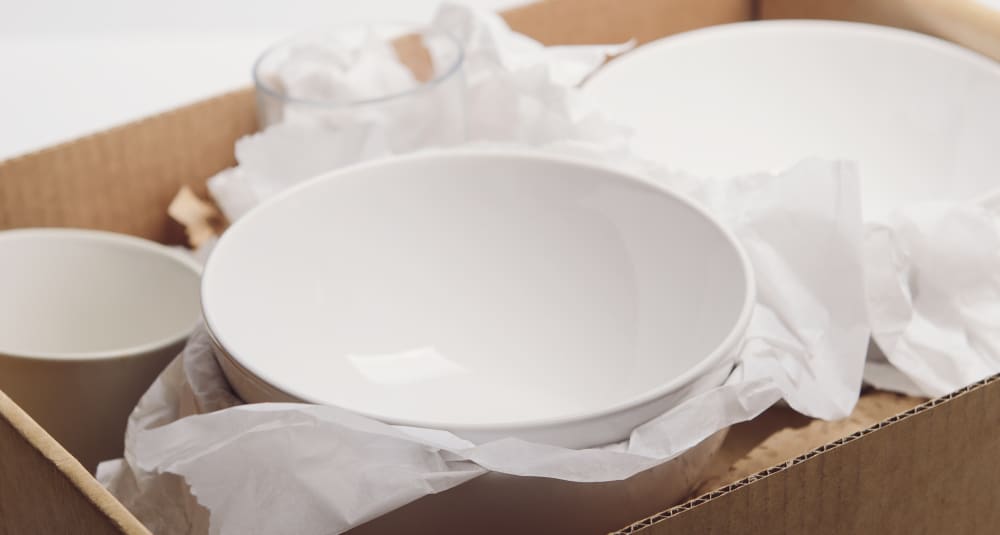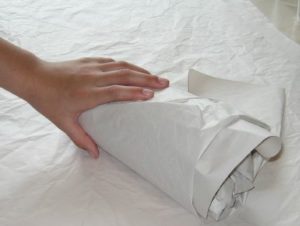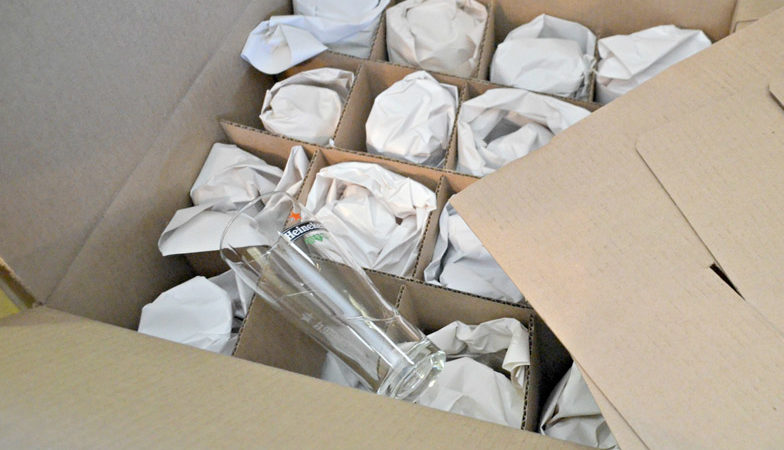How to Pack Your Dishes and Glassware When Moving?

Best way to pack dishes for moving
These tips on how to pack dishes and how to pack glassware for moving will ease your moving process a lot more. Using the right Box for packing glassware, china dishes and breakables will ensure safe moving of the cargo.
Tips for choosing the right packing materials:
- Dish barrels- these are strong and thick cardboard made to absorb shock when traveling and protect the dishes. These cost a little extra tan regular cardboard boxes but are worth the price.
- Make sure to set the boxes properly and make sure to tape the bottom. Only use strong, wide t

image source ape meant for packing instead of duct tape. You can also use gun tape to make it easier. You will be able to set up the barrels easily with a little practice.
- Make the use of newsprint for packing breakables, remember to wash every piece before you use them later after unpacking.
- Set a stack of paper on the table, and you are ready to start packing with a handy carton.
- Involve the whole family in packing. You can ask your children for help. This will make the moving process more exciting and adventurous.
-
Start by making a soft paper bed inside the Barrel
Soft packing paper bed is the first thing to go inside the packing carton; this will act as a cushioned box when traveling. Using crumpled paper is a better choice instead of a folded paper or newsprint. The crumpled paper acts as a shock absorber for the move. Don’t be restrictive in using the paper. You will need to make a six-inch paper bed at the bottom of every Barrel.
Start by packing the heaviest carton first like the sturdiest glassware and keep the most fragile items on the top half part of the Box. For instance, heavy glass mugs or glass serving trays make for the bottom layer of the Barrel. The key for a good packing is keeping lots n lots of paper on the top and bottom of the boxes and wrapping each piece individually with packing paper for extra protection.
Lay the glassware on wrapping paper stack. Insert the paper in the open end of the glassware to provide cushioning. Roll individual pieces and tuck the sides in the glassware.
-
How to pack glasses?
Use a wrapping style for stemware or glasses. Place the wrapped bundles after finishing on the crumpled bed of packing papers in the carton or dish barrel. Line all the glassware items side by side and keep adding more packing paper in the corners where there is more risk of breaking. Add one or two more sheets of packing paper in the mid-layers and try to fit small sized glassware in the available space. If you hear a clunking noise when the items make contact with one another after placing it in the carton, that is a sign; there is not enough paper in between to prevent the breakage of items. Don’t shy away from using more paper; adjust in spaces as required.
Follow the same method of wrapping the plates and place paper in between each plate. You can then start stacking them in small stacks of similar size plates in the carton and keep adding more paper as required.
Always remember to pack heavy and large plates in the bottom part of the Box first. For break-resistant and durable dishes like Corelle plates, you can use less paper between the layer. The wrinkled paper acts as a cushioning. Use more packing paper with stoneware, fragile porcelain, or china dishes.
-
Fill the Box till the top.
Add the wrapped bundles of dishes to the barrels or cartons until you reach about three inches distance from the top. You have to add the crumpled paper layer at the top of all the items, and you can also add nonbreakable items like a durable plastic tray or lightweight wooden spoons. Fill the top with paper properly so that you do not end up putting pressure on the Box when taping it.
Mark and label the boxes; this will make the unloading process a lot easier. You can use these packing materials again if you expect to be moving again in the future.



